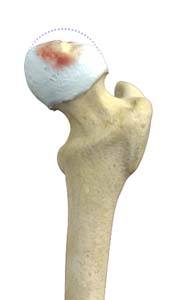Legg-Calve-Perthes-Disease

What is Legg-Calve-Perthes-Disease?
Legg-Calve-Perthes disease (LCPD) or Perthes disease is a disorder of the hip that affects children, usually between the ages of 4 and 10. It usually involves one hip, although it can occur on both sides in some children. It occurs more commonly in boys than girls.
Causes of Legg-Calve-Perthes-Disease
The cause of Legg-Calve-Perthes disease is not clearly known. It may occur due to inadequate blood supply to the ball of the hip joint (femoral head), which leads to death of the bone. Over the course of several months, the blood supply returns to the bone tissue and new bone cells gradually replace the dead bone over 2 - 3 years.
Symptoms of Legg-Calve-Perthes-Disease
Some signs and symptoms of Perthes disease include:
- Walking with a painless limp
- Pain or stiffness in the hip, groin, thigh or knee
- Shortening of leg or unequal leg length
- Wasting of thigh muscles
Diagnosis of Legg-Calve-Perthes-Disease
Your doctor will make a diagnosis based on your child’s signs and symptoms, a thorough physical examination, imaging studies such as X-ray of the hip, and magnetic resonance imaging (MRI) scan.
Treatments for Legg-Calve-Perthes-Disease
The goal of treatment for Perthes disease is to keep the femoral head snug in the socket. Non-surgical treatment options may include rest, activity restrictions, anti-inflammatory medications, casting or bracing, and physical therapy.
If non-surgical treatments don't work, your child may need surgery. Surgery involves lengthening a groin muscle or reshaping the pelvis (osteotomy) depending on the severity of the condition and the shape of the femoral head.
Related Topics:
- Hip Adductor Injuries
- Pediatric Femur Fracture
- Stress Fractures of the Hip
- Avulsion Fractures of the Pelvis
- Hip Injury
- Stem Cell Therapy for Hip Injuries
- Gluteus Tendon Tear
- Hip Pain
- Snapping Hip Syndrome
- Hip Bursitis
- Femoroacetabular Impingement
- Avascular Necrosis
- Hip Fracture
- Hip Dislocation
- Hip Labral Tear
- Hip Instability
- Hip Groin Disorders
- Subtrochanteric Hip Fracture
- Hip Abductor Tears
- Hip Synovitis
- Developmental Dysplasia
- Legg-Calve-Perthes-Disease
- Irritable Hip
- Hip Tendonitis
- Hip Pointer
- Transient Osteoporosis of the Hip
- Osteoarthritis of the Hip
- Inflammatory Arthritis of the Hip
- Groin Injuries in Athletes
- Periprosthetic Hip Infection
- Hamstring Injuries






